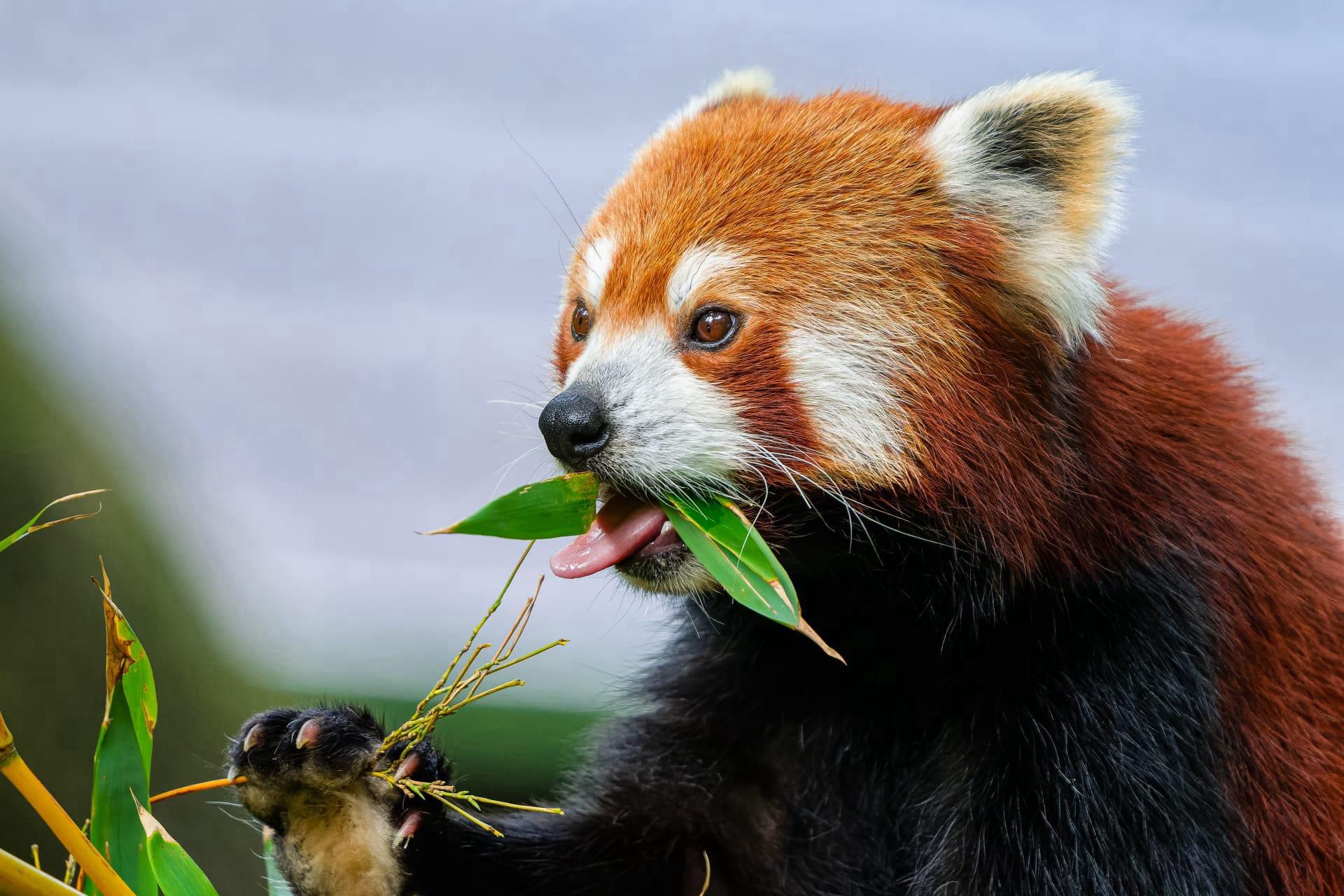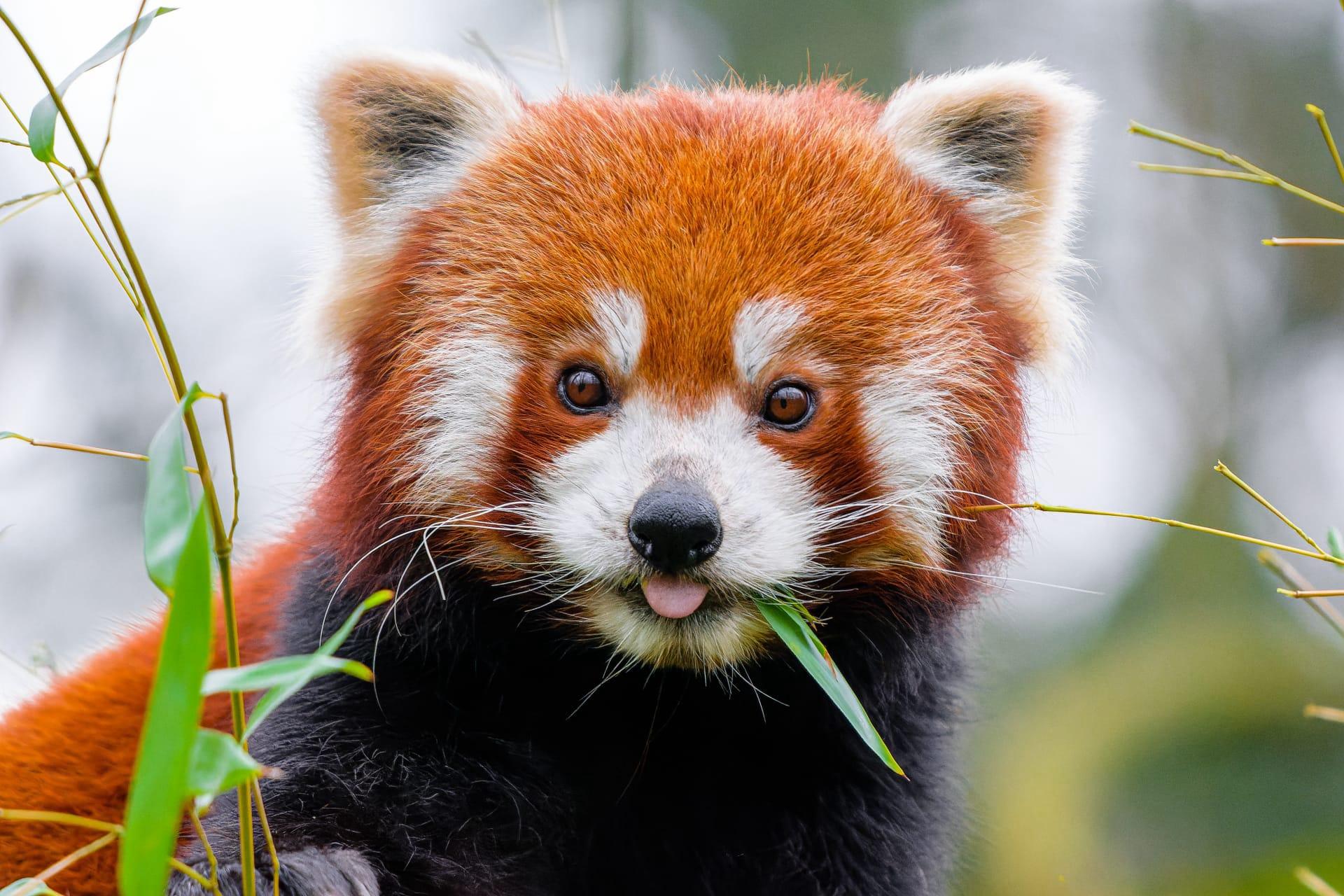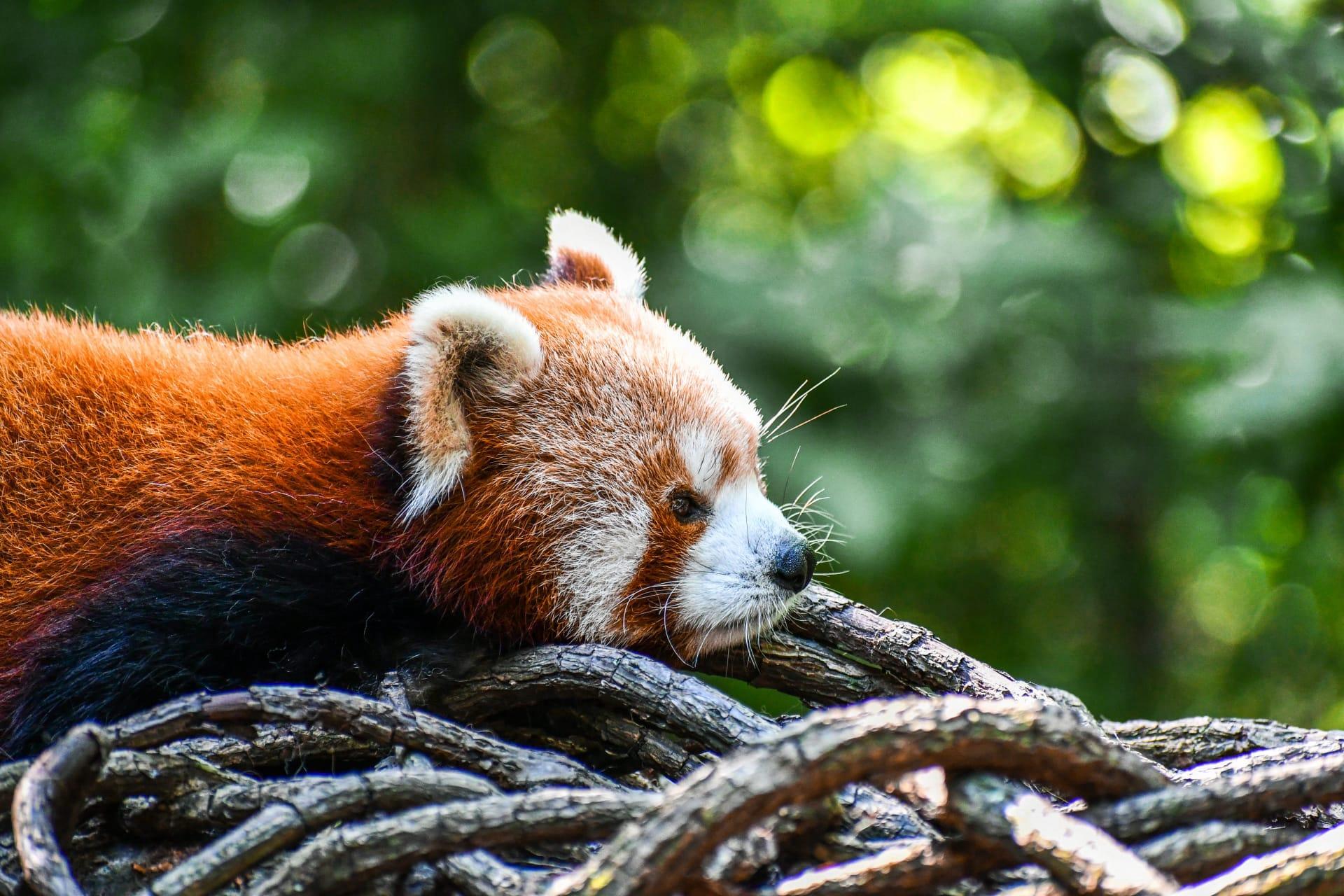Red Panda
- Home /
- Mini Encyclopedia /
- Animal /
- Red Panda
1
The Red Panda, scientifically known as Ailurus fulgens, belongs to the family Ailuridae. This species is unique, standing out as the only living member of its genus Ailurus and family Ailuridae in the animal kingdom. Its classification has been a subject of debate, with some earlier theories suggesting a link to raccoons or bears. However, genetic studies have firmly placed the Red Panda in its own distinct family, separate from these groups.
Red Pandas are native to the temperate forests of the Himalayas, ranging across countries like Nepal, India, Bhutan, China, and Myanmar. Their habitat is typically found at elevations between 2,200 and 4,800 meters, where mixed deciduous and conifer forests with dense understoreys of bamboo provide both the food and cover they need. This arboreal mammal is adept at climbing and spends most of its life in the trees, which also serves as a crucial refuge from predators.

2
Question: Do Red Pandas hibernate like bears?
Answer: Unlike bears, Red Pandas do not hibernate. This misconception may arise due to their name and appearance, which can resemble a bear to some extent. Red Pandas are well adapted to cold temperatures; their thick fur and bushy tails help them withstand the chill. Instead of hibernating, they remain active throughout the winter, although they may sometimes experience torpor, a state of decreased physiological activity during short periods of extreme cold.

3
Red Pandas employ several strategies to survive in their environment. Primarily, they are crepuscular, meaning they are most active during the early morning and evening hours. This behavior helps them avoid predators and manage their energy efficiently. Their diet mainly consists of bamboo, but they are omnivores and will also eat fruits, acorns, eggs, and small mammals. Red Pandas have a pseudo-thumb, an extended wrist bone, which helps them grasp bamboo shoots and leaves.
Another survival strategy is their solitary nature. Red Pandas are territorial and prefer to live alone, which reduces competition for food. They communicate through vocalizations and scent markings to establish their territory and find mates. During the breeding season, the typically quiet red panda becomes more vocal in order to attract a partner.

4
In their ecosystem, Red Pandas play a significant role in maintaining the health and balance of their habitat. As bamboo consumers, they aid in controlling the growth of this plant, which is vital because bamboo can grow rapidly and dominate a forest floor, hindering the growth of other plant species.
Furthermore, as prey for predators like the snow leopard and the martens, Red Pandas are an integral part of the food web. Their presence indicates a healthy, biodiverse forest ecosystem. Also, as they move through the forest, they disperse seeds and contribute to forest regeneration, which is crucial for maintaining forest health and biodiversity.

5
Film: "The Secret Life of the Red Panda" (United Kingdom, 2014) - This documentary delves into the hidden world of the Red Panda in the wild. Filmed in the misty forests of Nepal, it offers a rare glimpse into the life, habits, and challenges faced by these elusive creatures, highlighting their struggle for survival against deforestation and poaching.
Book: "Red Panda: Biology and Conservation of the First Panda" (United States, 2010) by Angela R. Glatston. This comprehensive book provides an in-depth look at Red Panda biology, behavior, conservation efforts, and their role in their ecosystems. It's a collaboration of research from global experts, offering insights into the challenges of preserving this endangered species.
Book: "The Red Panda: Out of the Bamboo Forest and Into the World" (Australia, 2015) by Laura Marsh. Aimed at a younger audience, this book explores the fascinating world of the Red Panda through engaging narratives and vivid photography. It discusses their habitat, diet, and the threats they face, encouraging awareness and conservation efforts among young readers.